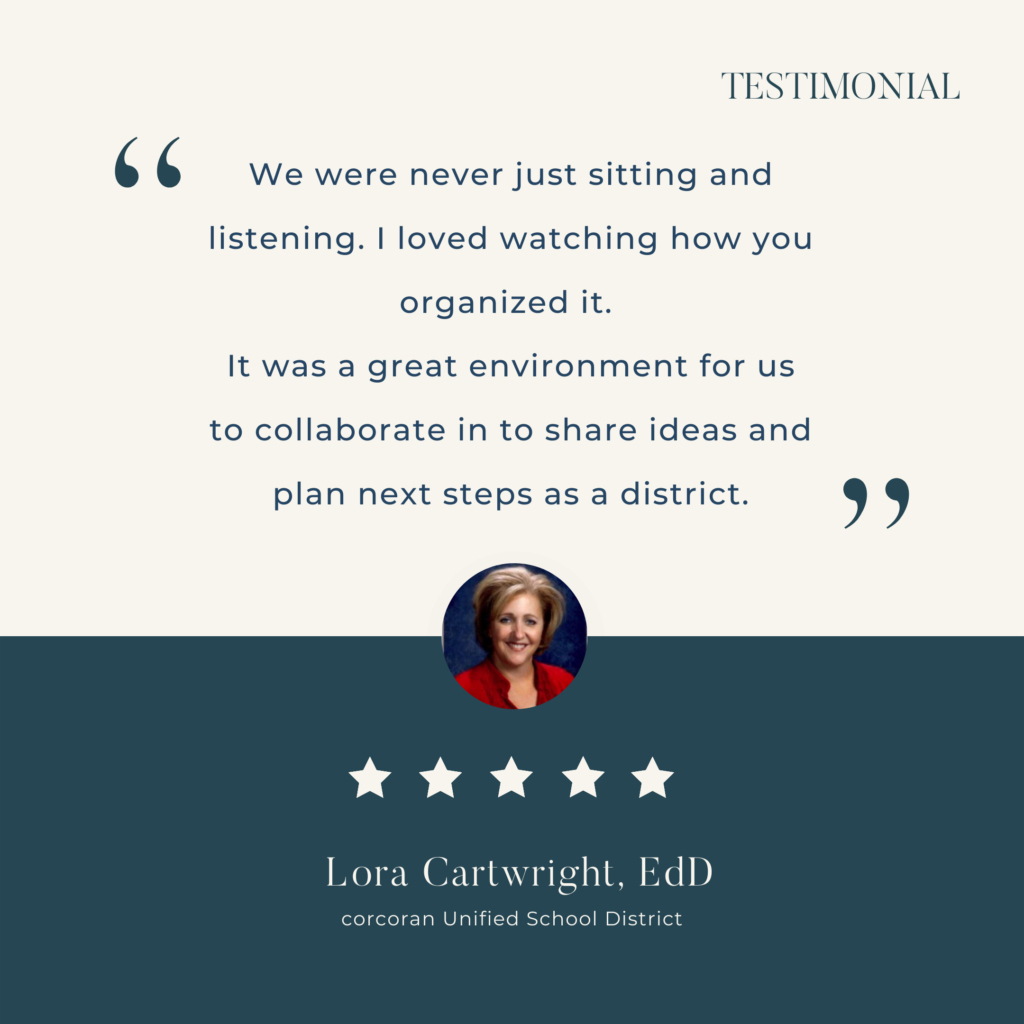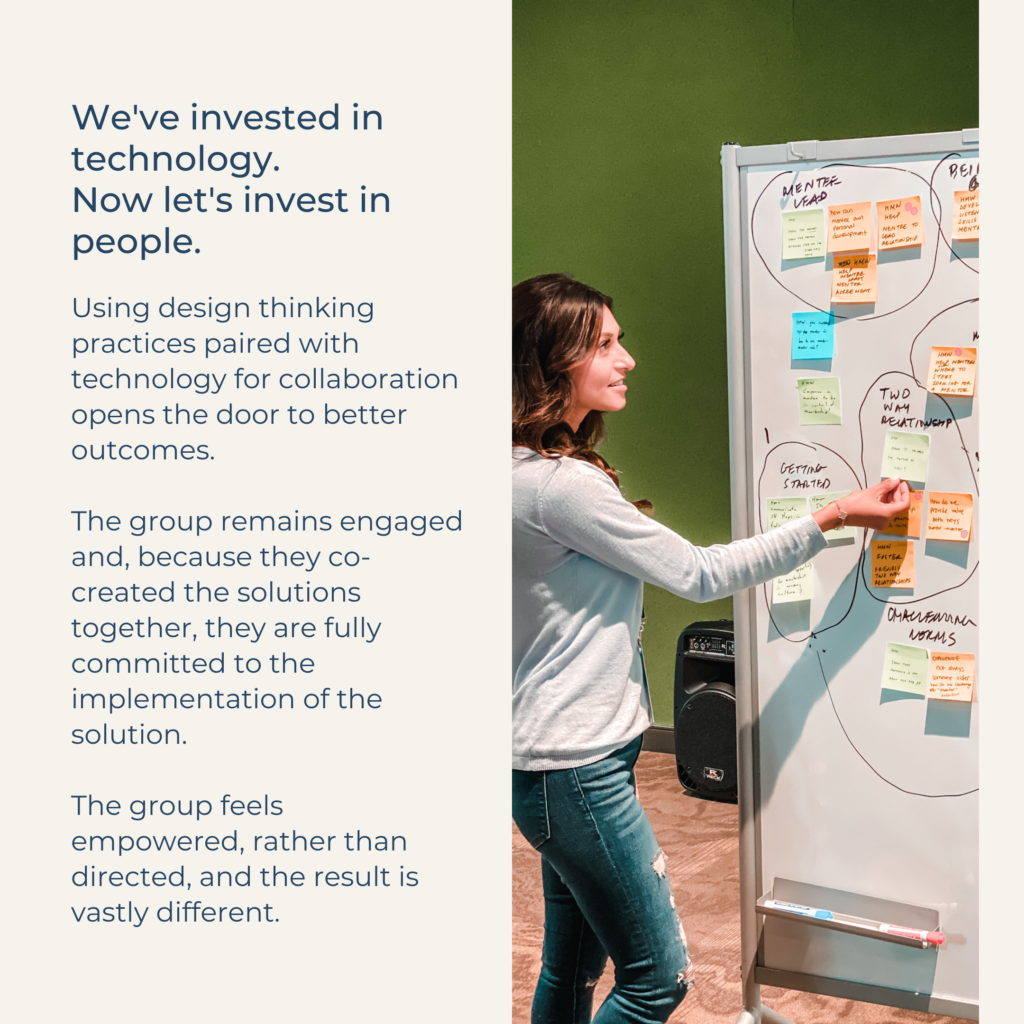If you want to create a different future, it begins by telling yourself a different story.
For too long, we’ve been grounded in stories about the past, stuck in a narrative that places the traditional model of school at the center. It’s creating frustration, burnout, and above all preventing us from thinking about what could be, and achieving our goals in preparing learners for their future.
In my new documentary, “Designing Schools: The Future is a Place We Create,” which you can now watch here, Erik Brynjolfsson shares the example of Jeff Bezos and Amazon.
Erik says, “If he had gone into bookstores and said let’s take the cashier out, and put a robot where the human was, then that would not have been the most creative use of technology. In fact it would have been hard for a robot to do what a human had been doing. Instead, he stepped back and thought of a new way of doing commerce. And that’s what generated the value that we see in Amazon today.”
To which you might respond and say, “Yes but in schools…”
Or you might respond and say, “How might we in schools…”
The difference between those two statements is the difference between a design thinker, and a non design thinker. In this excerpt from the documentary, I share an overview of design thinking as Reshan Richards illustrates the ideas.
The Obstacle is the Way
As Ben Orlin says, “Creativity is what happens when the mind encounters an obstacle. It’s the human process of finding a way through, over, around, or beneath. No obstacles, no creativity.”
He’s not alone in sharing this sentiment. It’s advice that dates back centuries. Marcus Aurelias, Roman Emperor, and Stoic philosopher shared, “The impediment to action advances action. What stands in the way becomes the way.”
Across the world, new models and innovations are taking place, as people turn obstacles into opportunities, and it’s time to highlight those stories, in more depth, so that everyone can be inspired by what’s possible.
TL;DR
On September 7, the Learner-Centered Collaborative hosted the official premiere of, “Designing Schools: The Future is a Place We Create.” The film is now available and you can find a link to it here.
I hope it inspires you to continue creating schools that challenge the status quo. Here are some highlights from our premiere night. Ready to keep learning? Then keep reading.
Using Design Thinking To Turn Obstacles into Opportunities
We can all agree the current model of education is not working well for anyone. Not the adults, and not the children. We also all recognize and see other possibilities. And we all struggle with how.
When conversations about what could be are facilitated using design thinking practices, we scaffold the conversation. Too often the conversation begins with everyone sharing ideas, or sharing the problems. Before you know it, time is up and nothing is accomplished.
It allows for rapidly solving big challenges, creating new programs, or improving existing ones. It addresses the core challenges we often experience when designing change such as alignment on objectives across all partners, lack of clarity around goals, and the pressure to be “innovative” without an understanding of how. Addressing these and creating alignment, clear goals, and a culture of trust and safety, will allow schools to move from pockets of innovation to cultures of innovation.
Let’s visualize this in the context of the iceberg analogy.

When we discuss, or begin strategizing, “What if we…” we quickly begin solving problems, purchasing technology, or collaborating around an idea without first giving careful consideration to:
- What problem are we trying to solve?
- Who are we trying to solve this problem for?
- What are people’s fears, and motivations around this problem?
- How do adults feel?
- How do students feel?
During my 2-year research at Design39 Campus, a public school in San Diego, CA featured in the documentary, I began to discover the elements that allowed them to challenge the status quo of school that were not immediately visible to the observer.
- What you don’t see is the time people took to learn and share their strengths so they are able to share what energizes them at work.
- What you don’t see is the culture of psychological safety that was built.
- What you don’t see is how people build and uphold trust through shared decision making and daily interactions.
Design Thinking Exercises to Build Trust and Collaboration with Your Team
The documentary takes you behind the scenes of how this group of educators, parents, students, led by their principal created a culture of innovation grounded in empathy. You’ll also hear industry experts like Seth Godin, Erik Brynjolfsson, Duncan Warldle, and Devin Vodicka contextualize global trends. You’ll hear why now is an opportune moment to give everyone the agency, skills, and motivation to see the obstacle as the way forward to turn it into an opportunity.
If you want to try a few design thinking exercises to deepen the trust and collaboration amongst your team, download my free deck that walks you through each one. This makes for a great activity after the viewing, or can be done as a standalone.
Using Design Thinking to Create Shared Prosperity
Technology has afforded us a wide array of possible opportunities, both in our personal and professional lives, compared to previous decades. However, as the World Economic Forum has highlighted often, while the dynamics of today’s world have the potential to create enormous prosperity, the challenge to societies, particularly businesses, governments and education systems, will be to create access to opportunities that will allow everyone to share in the prosperity.

Designing Schools: The Future is a Place We Create premiered on September 7. And if there was one world that reflected how viewers felt, it was inspired!
At the end one viewer came up to me and asked, “Most documentaries are negative. And highlight challenges around their topic, I didn’t notice that in yours.”
It was a great question and he is right. When we talk about change, we often focus on the negatives, not the positive. Over the past decade, as I’ve worked with schools My goal was to shine a light on the possibilities. In classrooms, district offices, conferences, to leadership teams who came to discuss the future of learning at Apple Park, I’ve heard every reason why people believe, “We can’t do that because…”
In those same settings, I’ve also seen firsthand how when fear and hesitation are balanced with strategy, enthusiasm, and the integrity to tell a different story, the incredible environments that emerge in schools for everyone.
Host a Workshop: Designing Schools: From Trust to Transformation with Design Thinking
I can’t think of many professional learning sessions that begin with a movie! When you host a workshop you’ll have access to share the documentary with your team, followed by a design thinking experience. To learn more, schedule a call with Sabba.
I’m Sabba.
I believe that the future should be designed. Not left to chance.
Over the past decade, using design thinking practices I've helped schools and businesses create a culture of innovation where everyone is empowered to move from idea to impact, to address complex challenges and discover opportunities.
stay connected
designing schools














